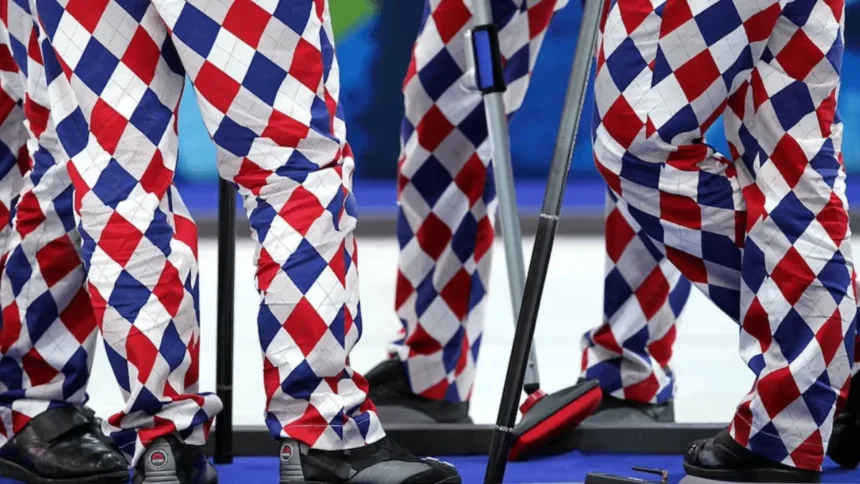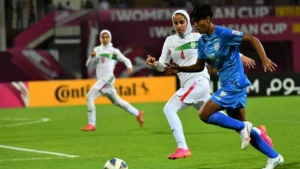The sport of curling is known for its tradition and strategy, but most importantly, the curling pants revolution. The sport gained momentum, not through changes in its equipment or rules, but through an unorthodox revolution. Curling was once characterised by its conservative, although functional, attire. However, in the 21st century, the sport saw a burst of the global fashion scene with the arrival of bold, patterned trousers.
The curling pants revolution not only captured the attention of fans worldwide but also had a long-lasting impact on the sport. With that being said, let’s take a look at the origin of the curling pants revolution.
Curling Pants Revolution: The Origin
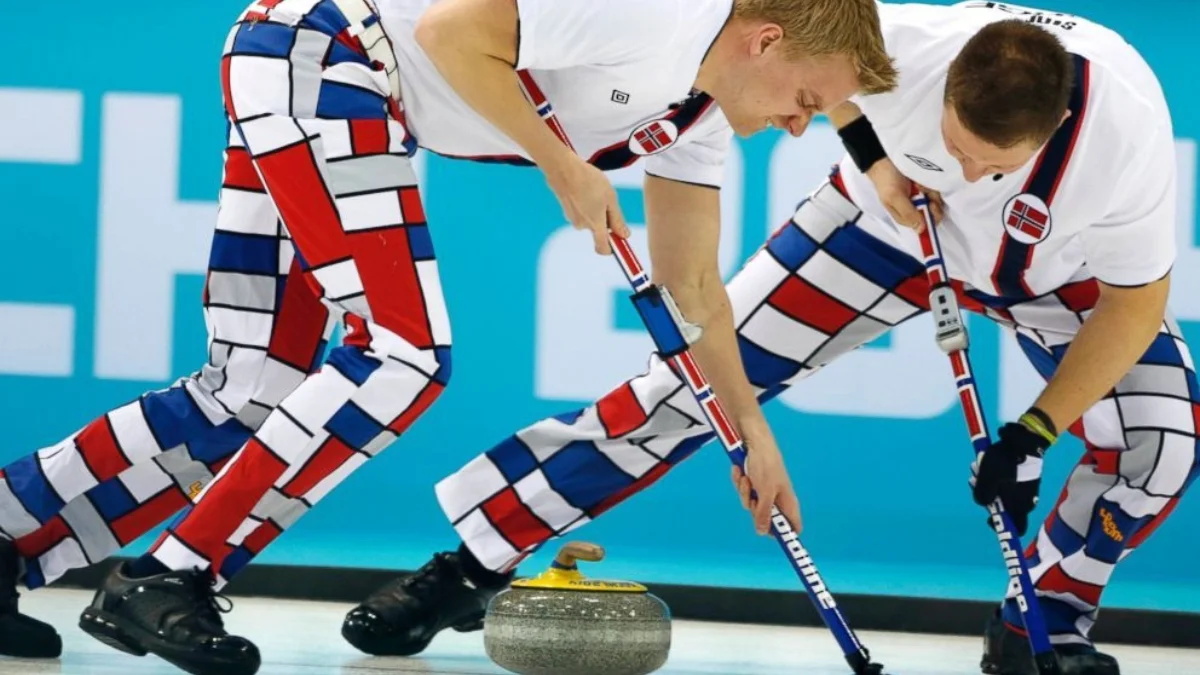
Curling uniforms have changed over the decades, but the true curling pants revolution came in the 2010 Winter Olympics in Vancouver. The Norwegian men’s team, led by Thomas Ulsrud, raised eyebrows and attracted cheers by stepping onto the ice in splashy, patterned pants. These bold pants were a stark contrast to the sport’s otherwise boring attire.
Who Started The Curling Pants Revolution
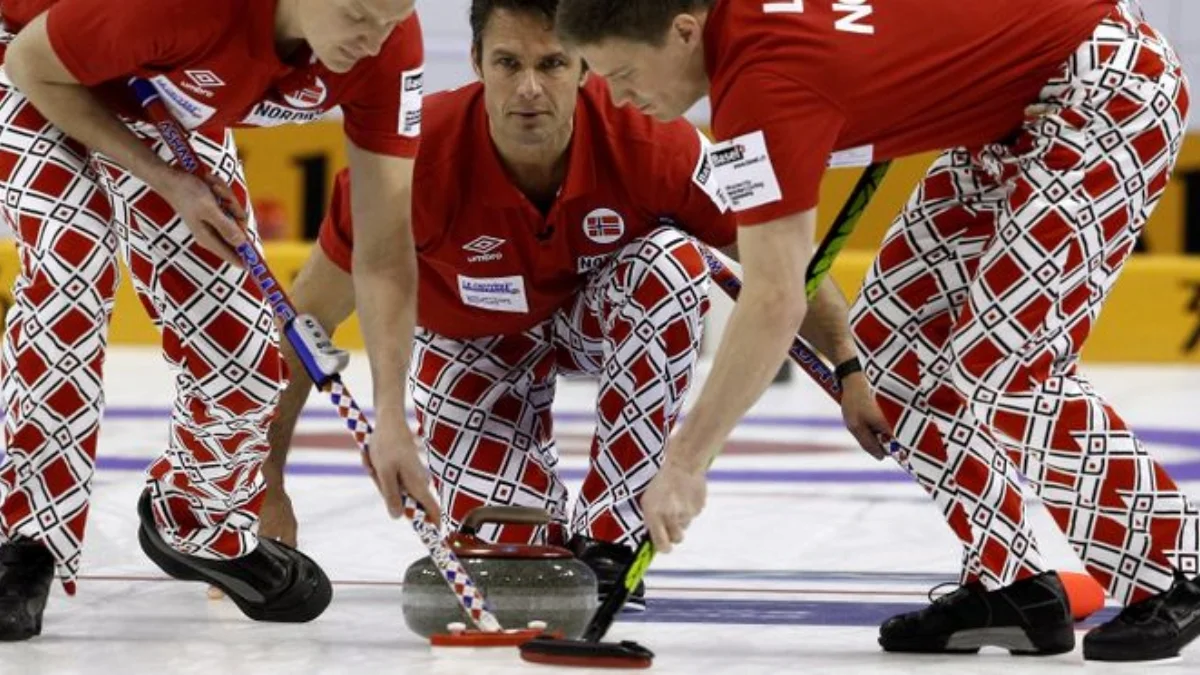
What’s more interesting is the story behind it. This famous curling pants revolution happened mainly due to an accident. According to the reports, these pants were a result of a miscommunication that left the team without the traditional uniforms, which made team member Christoffer Svae order the now-iconic pants that became their signature look.
The best part is that the Norwegians didn’t stop there. They continued to wear these funky pants at every major tournament, especially during the 2014 Olympics, where they wore a different pair for each match. Since then, the curling pants revolution has returned on multiple occasions, but no team matches the Norwegians’ impact.
The curling pants revolution is still remembered and occasionally seen today, but it has not become a universal standard. The Norwegian team’s legacy and their pants remain a fan favourite.
What Did It Change?
The curling pants revolution changed curling forever in several ways, which are:
Visibility and Popularity: The Norwegian pants brought an undeniable media attention to curling, especially during the Olympics, making the sport more accessible and appealing to new audiences.
Team Identity and Branding: Teams began to see uniforms as a way to express personality and national identity, moving beyond mere functionality.
Comfort and Performance: The pants revolution also coincided with broader improvements in curling attire. Modern materials like Lycra and quick-dry fabrics replaced stiff, uncomfortable polyester, making pants more athletic and functional, addressing issues like burns from sweeping and awkward fits during slides.
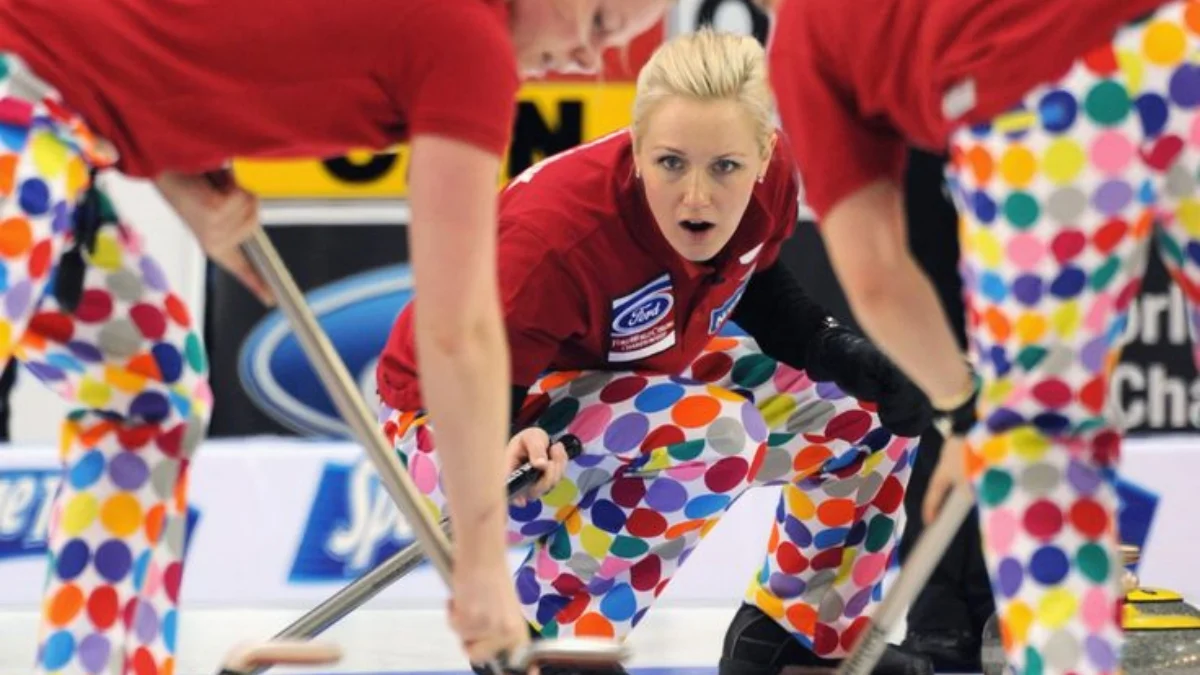
Breaking Tradition: The willingness to break from tradition inspired other changes, including more fitted, athletic cuts and the acceptance of women’s teams choosing their own pants for comfort and style.
The Legacy
The “Curling Pants Revolution” left a lasting legacy on the sport:
Cultural Impact: The Norwegian team’s pants became a symbol of curling’s quirky charm and willingness to embrace fun, helping to dispel stereotypes of the sport as old-fashioned or dull.
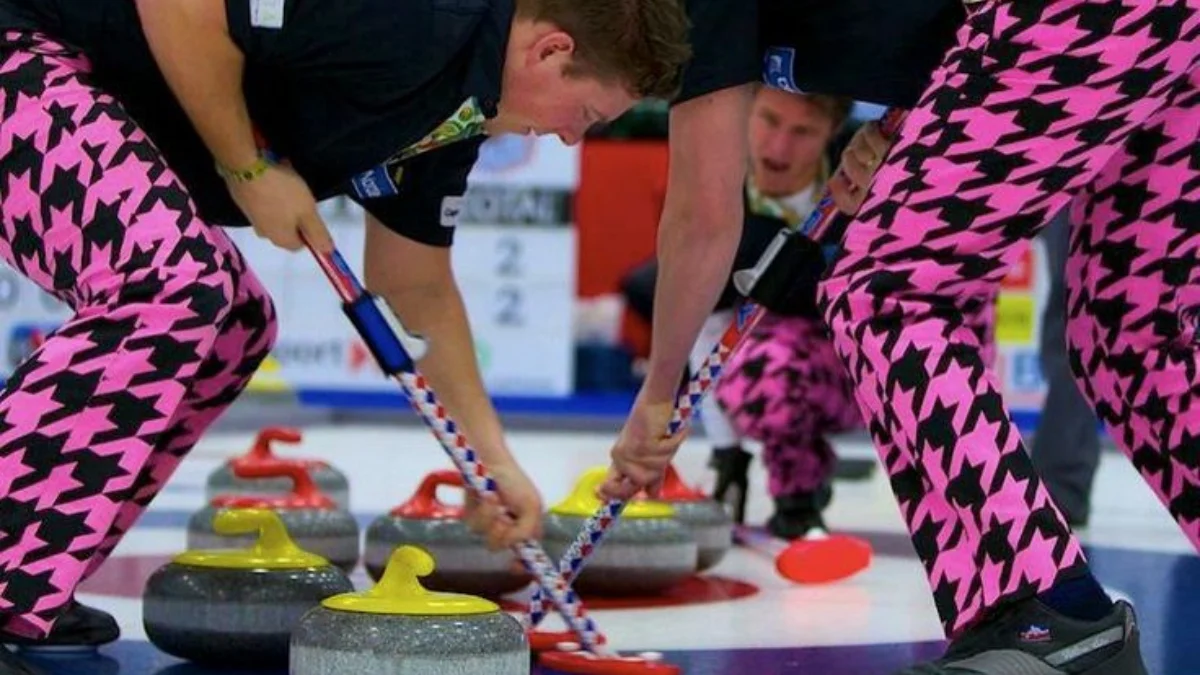
Fashion Forward: The incident sparked ongoing conversations about fashion in curling, leading to more thoughtful uniform designs across men’s and women’s teams. Former fashion blunders, like the infamous see-through white pants of the 1990s, gave way to stylish, functional, and sometimes even glamorous apparel.
Inspiration for Change: The pants served as a catalyst for broader changes in curling culture, encouraging athletes and organisers to prioritise both performance and personality in their presentation.
Also Read: The Curling Story: History, Rules, and Everything In-Between


